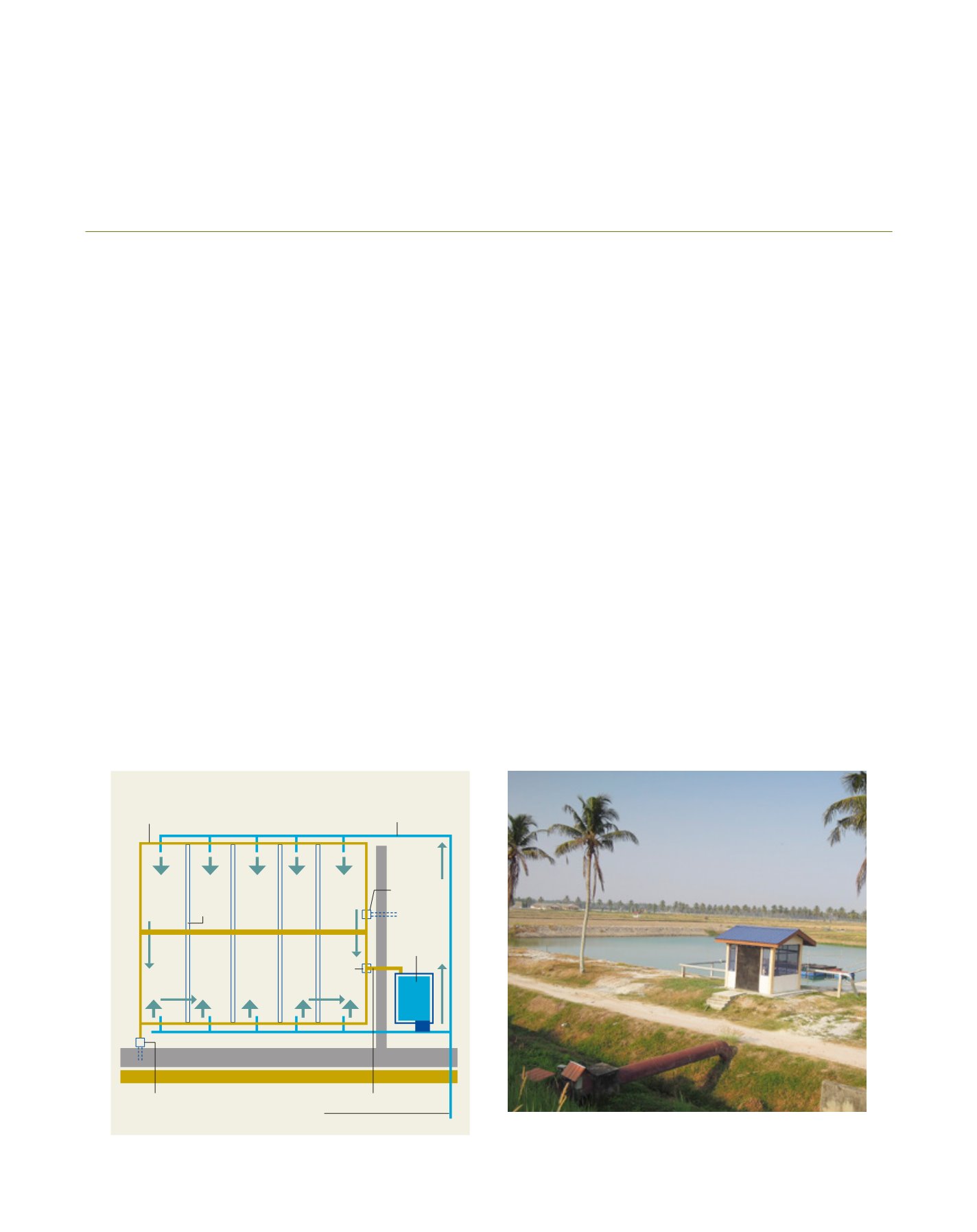

[
] 33
A B
et ter
W
or ld
Ensuring food security in Malaysia through
technology and innovation in water and agriculture
Chan Chee Sheng, Mohamad Roff Mohd. Noor, Zulkefli Malik, Khairatul Azmah Mohamed, Noor Haslizawati Abu Bakar,
Mohammad Shahid Shahrun and Sharif Haron, Malaysian Agricultural Research and Development Institute (MARDI)
M
alaysia’s average annual rainfall is 2,940 mm.
With a total land area of 33,080,000 ha, of which
7,585,000 ha is cultivated, Malaysia can be consid-
ered relatively water-rich compared to many other countries
in the world. The volume of annual rainfall is 990 billion m
3
,
of which 360 billion m
3
(36%) is lost to evapotranspiration,
566 billion m
3
(57%) is the total annual surface run off,
and 64 billion m
3
contributes to groundwater recharge. It
is estimated that the total internal water resource is 580
billion m
3
/year. Malaysia also has a total storage capacity
of 460 million m
3
, with 16 dams located across the country
providing water for both irrigation and domestic use, while
also fulfilling a flood mitigation and silt retention function.
It is estimated that the total water withdrawal for Malaysia
is 13,210 million m
3
, with 65% accounting for agricultural
activities, out of which 90% is devoted to rice irrigation and
the remainder utilised for vegetable, field crop and nursery
plant production. Perennial crops such as oil palm, rubber,
coconut and fruit trees are usually grown under rain-fed
conditions. Of the remaining volume, 18% of annual water
is used to serve municipalities and another 17% for industry.
In Malaysia, the water resources utilisation priorities are:
• Make the most efficient use of direct rainfall
• If rainfall is insufficient, utilise the uncontrolled river flow
• If that is insufficient, reuse drainage water or water release
from the controlled reservoir to supplement irrigation
• If that is insufficient, use alternative resources such as
underground water.
Irrigation in Malaysia
Surface irrigation is utilised mainly for rice production, even
though only 48% of rice cultivation areas are provided with
extensive irrigation and drainage facilities, with the remaining
areas being rain fed. Rice is grown under level basin condi-
tions in which the fields are flooded from planting to harvest.
The seasonal water requirement for rice cultivation ranges
from 1,100 to 1,300 mm. Of this, 52% of the total require-
ment is derived from direct rainfall, 20% is from uncontrolled
surface runoff and 27% from dam storage. Currently, the
recycling pumps contribute 17% of water released from the
reservoirs without impacting the environment.
Furrow irrigation is used mainly for vegetables or short
term crop cultivation in the small-scale planting of a few
Fig. 2: Storage pond and pump house used in a tail water recovery project
Fig. 1: Layout of the tail water recovery research plot
Source: MARDI
Bund
and
drain
Paddy
plot
Plot
Supply line
Canal/drain
Water gate
Water gate
Water
gate
Farm road
Drain
Water source (pond)
Pump house
Culvert
Recycling
pond
Image: MARDI
















